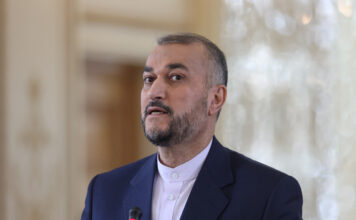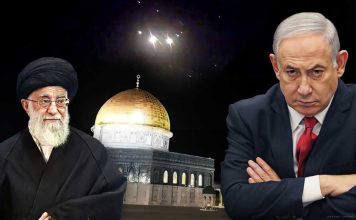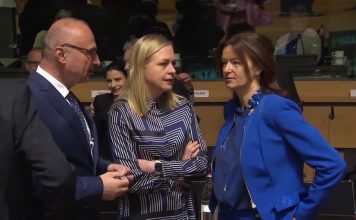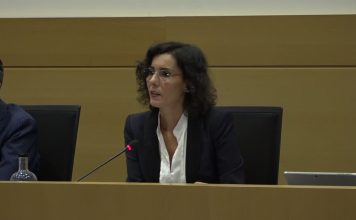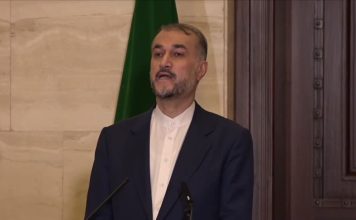By Dr. Bahram Ghiassee
[aesop_content color=”#ffffff” background=”#0892d0″ columns=”1″ position=”none” imgrepeat=”no-repeat” disable_bgshading=”off” floaterposition=”left” floaterdirection=”up” revealfx=”off” overlay_revealfx=”off” aesop-generator-content=”Dr. Bahram Ghiassee is a London-based nuclear analyst and academic. He holds dual qualifications in nuclear science and technology, and international law. He is a chartered member of the UK Nuclear Institute, and a member of the International Nuclear Law Association (Brussels). The following is an opinion piece submitted to Kayhan Life.
“]Dr. Bahram Ghiassee is a London-based nuclear analyst and academic. He holds dual qualifications in nuclear science and technology, and international law. He is a chartered member of the UK Nuclear Institute, and a member of the International Nuclear Law Association (Brussels). The following is an opinion piece submitted to Kayhan Life.[/aesop_content]
The international community is currently commemorating the 5th anniversary of U.N. Security Council Resolution 2231 (UNSC Res2231), adopted unanimously on 20 July 2015.
The Resolution was adopted with a view to (i) lifting the previous seven nuclear-related and missiles-related sanctions imposed on Iran by the Security Council; (ii) endorsing the Iran Nuclear Accord, formally known as the Joint Comprehensive Plan of Action (JCPOA), concluded on 14 July 2015 by Iran, the European Union (EU), the five permanent members of the UNSC and Germany (P5+1); (iii) transforming the political commitments of the JCPOA Participants into international legal obligations; and (iv) creating legally binding obligations for all members of the U.N., to support the implementation of the JCPOA.
The Resolution was adopted at the behest of the EU and the P5+1, who had made their participation in the JCPOA contingent upon the Security Council adopting a new resolution. It comprises the 7-page text of the Resolution itself; the 90-page text of the JCPOA (Annex A); and the 7-page ‘Statement’ by the EU and the P5+1 (Annex B).
On 18 October 2020, restrictions on conventional arms exports to Iran will be terminated, pursuant to paragraph 5(2) of Annex B. This is five years after the JCPOA ‘Adoption Day’ on 18 October 2015. The types of arms which Iran will be allowed to acquire, as listed under paragraph 5(1) of Annex B, include, inter alia, “battle tanks, armored combat vehicles, large caliber artillery systems, combat aircraft, attack helicopters, warships, missiles or missile systems,” as defined by the UN Register of Conventional Arms. The UN Register provides a detailed list of seven categories of major conventional arms, including “Missiles and missile launchers” (Category VII).
Following the U.S. unilateral withdrawal from the JCPOA on 8 May 2018, and the re-imposition of sanctions, the Trump Administration, in line with its policy of exerting maximum diplomatic, political and economic pressures on the Islamic Republic of Iran, initiated diplomatic efforts to extend the arms embargo beyond the expiry date of 18 October 2020. The U.S. Administration is arguing that termination of the embargo, which was first imposed by the UNSC Resolution 1747, in 2007, would enable Iran to acquire new weapons, supply more weapons to terrorists and its proxies in the Middle-East, and, consequently, create instability and insecurity in the region and beyond.
The U.N. Secretary-General, in its 9th Report on the ‘Implementation of the Security Council resolution 2231 (2015)’, dated 11 June 2020, has also expressed concern in relation to possible breaches of the arms transfer provisions of the Resolution by Iran. The Report, which focuses on restrictions set forth in Annex B on nuclear-related, arms-related and missile-related transfers to and from the Islamic Republic, notes that a number of arms-related items may have been transferred from Iran “in a manner inconsistent with the resolution 2231 (2015).” It also notes that certain components of the “uncrewed aerial vehicles” used in attacks on Saudi Arabia were of Iranian origin.
Iran, in a statement to the Security Council, has denied the assertions in the Report, stating that “there are a number of serious flaws, inaccuracies and discrepancies in the 9th Report, related to the so-called Iranian connection to the export of weapons or their components that are used in attacks on Saudi Arabia.” The Statement also notes that the Secretariat lacked the capacity, expertise, and knowledge to conduct such an investigation. Moreover, Iran has stated that in the absence of reliable evidence, it considers the allegations as politically motivated.
Russia has been, equally, critical of the U.N. Secretary-General’s Report, noting that the Secretariat had no mandate to undertake such investigations, and had failed to meet the expected high standards of impartiality. Russia has also asserted that the Report lacks evidence, and its ‘final assessments’ of violations of Resolution 2231 are “baseless and biased”.
As part of the diplomatic effort to extend the arms embargo beyond 18 October 2020, the U.S. is intending to present a draft resolution to the Security Council. The U.S. has already shared the text of the draft with France, Germany, UK and Russia, as noted by the U.S. Ambassador to the U.N., Ms Kelly Craft, on 5 June 2020 . The draft has also been privately shared with the 15 members of the UNSC. The draft resolution, leaked to the press, calls on all countries to “prevent the direct or indirect supply, sale, or transfer” of weapons to and from the Islamic Republic, unless a Security Council committee approves it at least 30 days in advance, on a case-by-case basis.
Russia and China have already expressed their opposition to the U.S. draft resolution. At a videoconference meeting of the 15 members of the UNSC on 30 June 2020, the Russian Federation’s representative to the UNSC had noted with concern that the U.S. proposal is an unacceptable attempt to legitimise its ‘Policy of maximum pressure’ on Iran. The Representative had also noted that there are no legal grounds for bringing the issue before the Security Council. He had, furthermore, added that “We said from day 1 that the US draft on Iran’s embargo is a utopia. It will not fly. It is not a basis for any negotiations.”
Based on the above, it may be inferred that, should the Trump Administration decide to formally present its current draft resolution to the UNSC, it would not be adopted. In the event of securing the affirmative vote of nine members, as required under the ‘Voting System’ of the UNSC, the draft resolution would be vetoed by Russia, or China. As permanent members of the UNSC, both have expressed their opposition to the extension of the arms embargo.
Implicitly acknowledging the likelihood of defeat, the Trump administration has warned the international community that it would invoke the “Snapback” provisions of Resolution 2231 (operating paragraphs 10, 11 & 12) and the JCPOA (paragraphs 36 & 37) to ensure the re-imposition of all the previous U.N. sanctions. Noting the opposition of China and Russia, and the dismay of France, Germany, UK, and the EU, this U.S. endeavour may prove to be equally ineffective.
In any event, the political landscape, after the November presidential elections, may be starkly different, and U.S. policy towards the JCPOA and sanctions may, depending on the election results, take a different strategic path.


